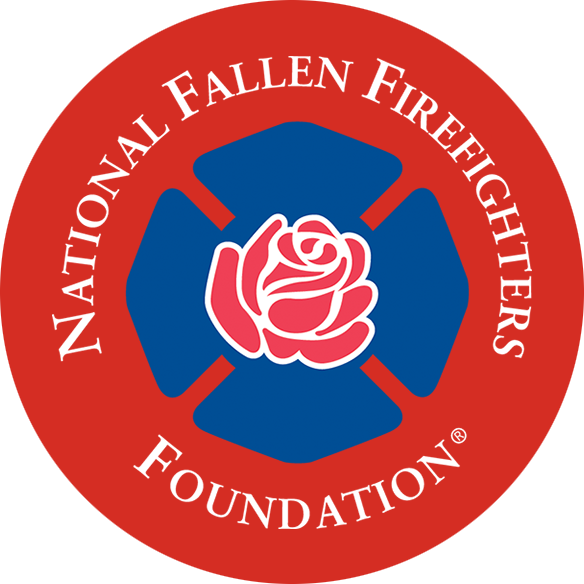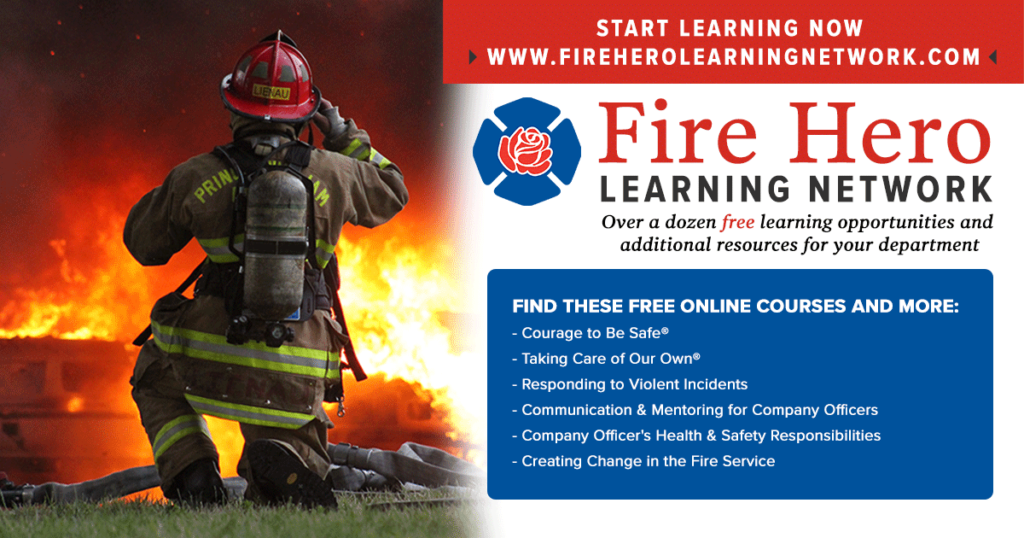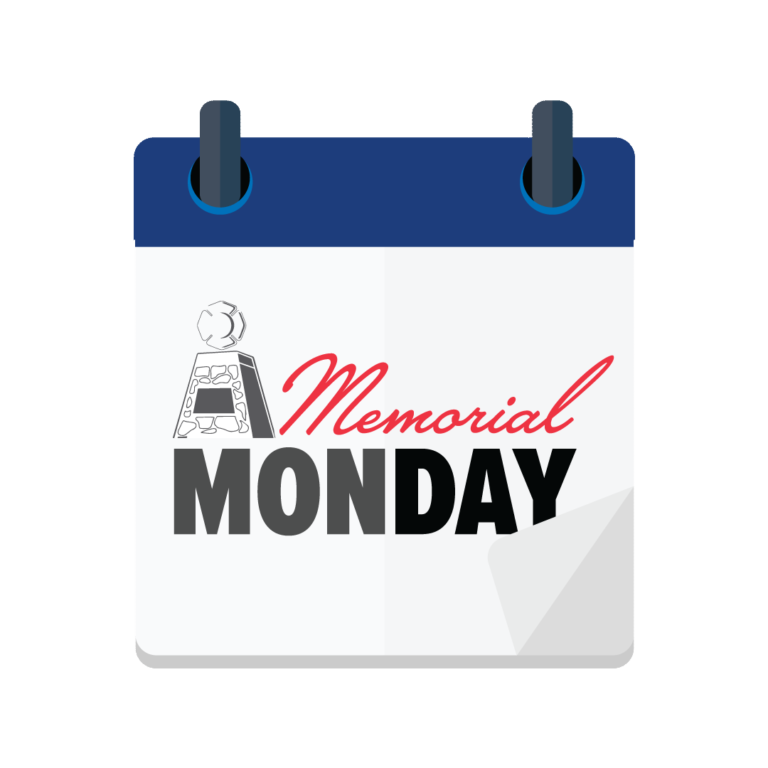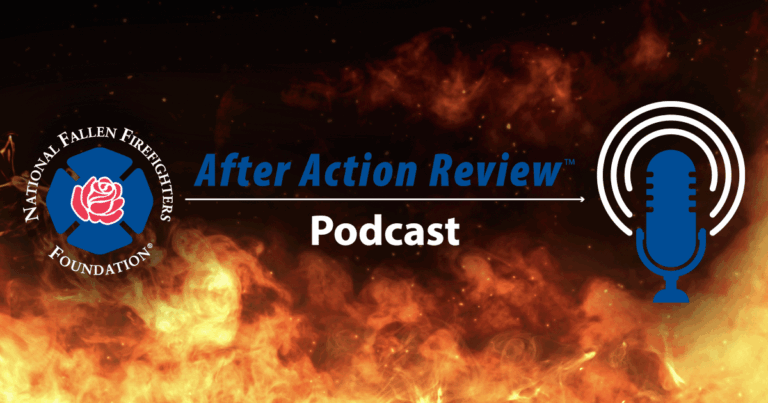FHLN offers many firefighter health and safety training features, all funded by AFG FP&S grants:
- 20 online training modules, including the flagship course Courage to Be Safe, and covering topics such as after action review, stress first aid, wildland fires, emergency vehicle driving, training safety, violent incidents, community risk reduction, and line-of-duty deaths. These health and safety training modules have been completed over 270,000 times by members of the fire service.
- 7 additional online training modules on fire protection systems accessed through a cooperative agreement with FM’s Fire Service Learning Network.
- An Emergency Services Risk Reduction Program Certificate for completing multiple related online modules. Over 10,200 people have earned this Certificate.
- A cluster of programs specifically for Company Officers to help them fulfill their firefighter health and safety responsibilities.
- Interactive Case Stories that go inside major fire events to understand what happened and the lessons
- A 3D, interactive Fire Attack and Suppression Decision Making Scenario where users can test their decision making skills and learn about research impacting fire attack and suppression tactics. Over 10,000 users have tried the scenario, with 55% successfully reaching the after action review stage.
- 23 Operational Checklists detailing the major tasks to be conducted during specific operations like building collapse, swift water, standpipe operations, and high voltage electrical emergencies; Operational Checklists can be downloaded in the standard version or customized to the department’s needs. Over 10,500 checklists have been downloaded, with 21% customized.
- Tested certificates of completion for all modules and a user transcript verifying all FHLN training the user has completed.
- An Instructor Mode enabling fire service instructors to use module videos as presentation elements for their in-person classes.
- Group Pre-Registration for departments to pre-register all their personnel for FHLN so all they have to do is a simple one-step activation to start training.
- Secondary Reporting where users can opt in to have their FHLN training results shared with their department supervisor.
- Instructor microsites to distribute teaching materials for the NFFF’s in-person classes.
- Flex Programs that can be taken self-paced online, as an in person NFFF class, or with an instructor using Instructor Mode.
- A testing platform for the NFFF’s in-person classes to earn certificates of completion. Over 4500 students have earned certificates for in-person NFFF classes through FHLN.
Some states require FHLN programs, primarily Courage to Be Safe. For example, the Texas Commission on Fire Protection requires all certified fire protection personnel to complete the NFFF’s Courage to Be Safe® program, which is available on FHLN.
The Fire Hero Learning Network delivers critical firefighter health and safety training, from the line firefighter through to command and leadership. Unless otherwise noted, FHLN’s training is appropriate for all levels of the fire service, all staffing characteristics (career, volunteer, and combination), all jurisdictions in the United States, and all types of firefighting (including public, private, structure, vehicle, wildland, military, transportation authority, State Fire Marshal, special squad, and academia). FHLN is extremely cost-effective. Training modules are produced for under $4 per credit hour earned, a cost that will continue to decrease as more people join the network and complete modules. FHLN’s content is free, and, in this era of tight budgets and declining volunteer ranks, no fire department could afford to replicate what FHLN offers. Without AFG support, the Fire Hero Learning Network would never have been created or expanded to offer so many ways to learn. If FHLN’s critical safety training wasn’t available, there would be more firefighter deaths and injuries devastating families, departments, and communities — a price our nation cannot afford to pay. FHLN’s work is a public service not just to fire departments but also to American society.
It is in the public interest to have FHLN’s free, vetted, quality firefighter training available online where everyone can access it 24/7/365 without the burden of cost, travel, leave, class size caps, or other fiscal and organizational limitations. National training also ensures that departments are learning the same best practices no matter where they are, which means that the level of service to the public and safety of firefighters is uniform across many different communities. Consistent training is also crucial because departments rely on mutual aid for large scale events and coverage, so it’s a great benefit to know everyone is training on the same practices.
For a relatively small investment, the AFG program grants for the Fire Hero Learning Network have created an enduring benefit to the fire service — a simple way for everyone to access quality training and resources that improve firefighter health and safety and save civilian and firefighter lives.
1 According to the United States Fire Administration, as of March 26,2025, there are approximately 1,054,400 active career, volunteer, and paid-on-call firefighters in the United States. Source accessed 3/27/2025: https://apps.usfa.fema.gov/registry/summary
